Jeep Compass vs Jeep Wrangler – Which model is better for everyday use?
Costs and Efficiency:
Price and efficiency are key factors when choosing a car – and this is often where the real differences emerge.
Jeep Compass has a decisively advantage in terms of price – it starts at 34200 £, while the Jeep Wrangler costs 69900 £. That’s a price difference of around 35657 £.
Fuel consumption also shows a difference: Jeep Wrangler manages with 3.30 L and is therefore significantly more efficient than the Jeep Compass with 5.80 L. The difference is about 2.50 L per 100 km.
As for range, the Jeep Compass performs decisively better – achieving up to 500 km, about 458 km more than the Jeep Wrangler.
Engine and Performance:
Power, torque and acceleration are the classic benchmarks for car enthusiasts – and here, some clear differences start to show.
When it comes to engine power, the Jeep Wrangler has a clearly edge – offering 380 HP compared to 213 HP. That’s roughly 167 HP more horsepower.
In acceleration from 0 to 100 km/h, the Jeep Wrangler is evident quicker – completing the sprint in 6.50 s, while the Jeep Compass takes 8.50 s. That’s about 2 s faster.
In terms of top speed, the Jeep Compass performs minimal better – reaching 188 km/h, while the Jeep Wrangler tops out at 177 km/h. The difference is around 11 km/h.
There’s also a difference in torque: Jeep Wrangler pulls convincingly stronger with 637 Nm compared to 345 Nm. That’s about 292 Nm difference.
Space and Everyday Use:
Beyond pure performance, interior space and usability matter most in daily life. This is where you see which car is more practical and versatile.
Both vehicles offer seating for 5 people.
In curb weight, Jeep Compass is evident lighter – 1667 kg compared to 2276 kg. The difference is around 609 kg.
In terms of boot space, the Jeep Compass offers hardly perceptible more room – 550 L compared to 533 L. That’s a difference of about 17 L.
In maximum load capacity, the Jeep Wrangler performs distinct better – up to 2050 L, which is about 489 L more than the Jeep Compass.
Who wins the race?
The Jeep Compass proves to be slightly ahead and therefore becomes our DriveDuel Champion!
Jeep Compass is the better all-rounder in this comparison.
Costs and Consumption
View detailed analysis
Engine and Performance
View detailed analysis
Dimensions and Body
View detailed analysis
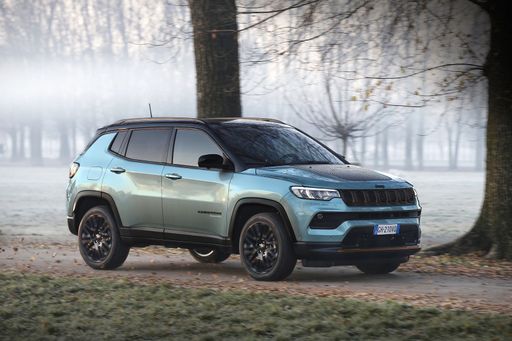 @ Jeep / Stellantis Media
@ Jeep / Stellantis Media
Jeep Compass
Jeep Compass
The Jeep Compass packs classic Jeep styling with a surprisingly composed demeanor, equally at home turning heads in the city or tackling a weekend dirt track. Inside it's a pragmatic, user-friendly compact SUV that prioritizes comfort and versatility — a smart pick if you want a dose of adventure without giving up everyday sense.
details @ Jeep / Stellantis Media
@ Jeep / Stellantis Media
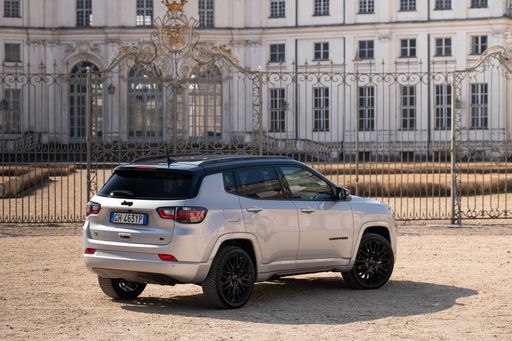 @ Jeep / Stellantis Media
@ Jeep / Stellantis Media
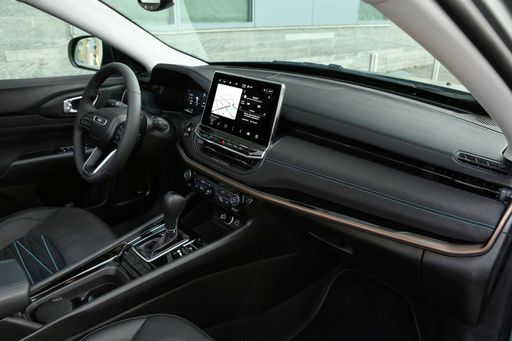 @ Jeep / Stellantis Media
@ Jeep / Stellantis Media
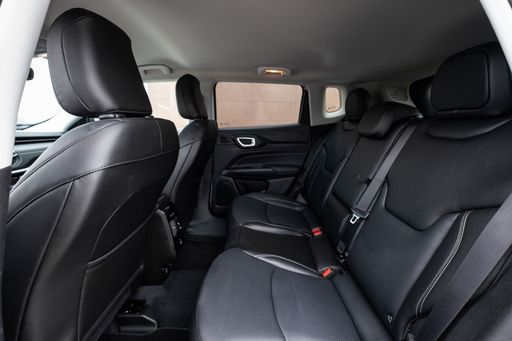 @ Jeep / Stellantis Media
@ Jeep / Stellantis Media
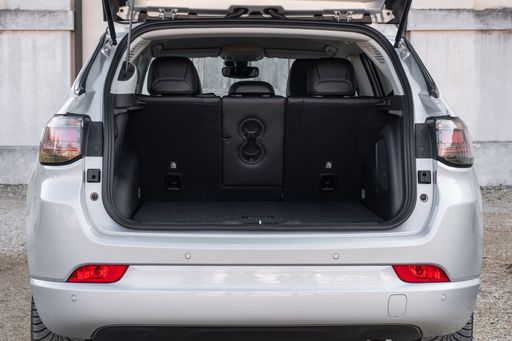 @ Jeep / Stellantis Media
@ Jeep / Stellantis Media
Jeep Wrangler
The Jeep Wrangler wears its go-anywhere attitude on its boxy shoulders, with exposed hinges, a removable top and a look that practically dares the tarmac to get in its way. Inside it’s simple and tough-minded, ready to swallow muddy boots and weekend gear, so if you crave honest off-road thrills rather than refined suburbia polish, the Wrangler is your unapologetic partner in adventure.
details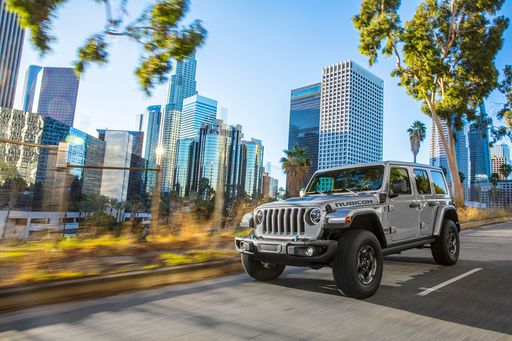 @ Jeep / Stellantis Media
@ Jeep / Stellantis Media
 @ Jeep / Stellantis Media
@ Jeep / Stellantis Media
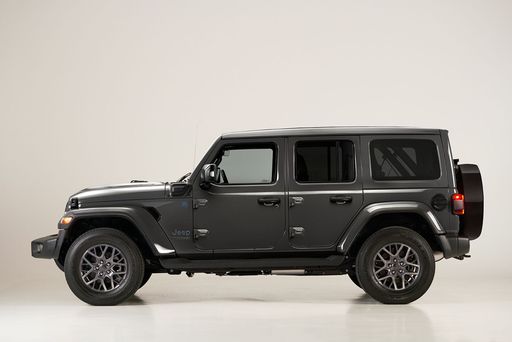 @ Jeep / Stellantis Media
@ Jeep / Stellantis Media
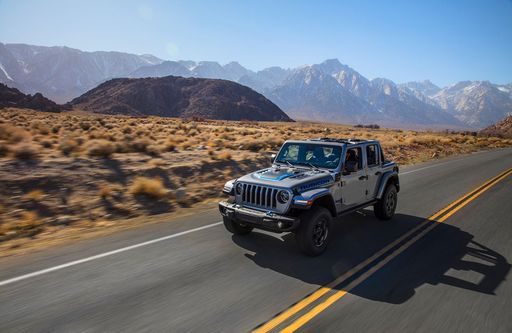 @ Jeep / Stellantis Media
@ Jeep / Stellantis Media
 @ Jeep / Stellantis Media
@ Jeep / Stellantis Media
 @ Jeep / Stellantis Media
@ Jeep / Stellantis Media
|
 @ Jeep / Stellantis Media
@ Jeep / Stellantis Media
|
|
|
|
Costs and Consumption |
|
|---|---|
|
Price
34200 - 43200 £
|
Price
69900 - 71600 £
|
|
Consumption L/100km
5.8 - 5.9 L
|
Consumption L/100km
3.3 - 4 L
|
|
Consumption kWh/100km
17.50 kWh
|
Consumption kWh/100km
-
|
|
Electric Range
500 km
|
Electric Range
38 - 42 km
|
|
Battery Capacity
74 kWh
|
Battery Capacity
-
|
|
co2
0 - 133 g/km
|
co2
74 - 91 g/km
|
|
Fuel tank capacity
55 L
|
Fuel tank capacity
65 L
|
Dimensions and Body |
|
|---|---|
|
Body Type
SUV
|
Body Type
Off-Roader
|
|
Seats
5
|
Seats
5
|
|
Doors
5
|
Doors
5
|
|
Curb weight
1667 - 2198 kg
|
Curb weight
2276 - 2383 kg
|
|
Trunk capacity
550 L
|
Trunk capacity
533 L
|
|
Length
4552 mm
|
Length
4882 mm
|
|
Width
1928 mm
|
Width
1894 mm
|
|
Height
1675 mm
|
Height
1838 - 1848 mm
|
|
Max trunk capacity
1561 L
|
Max trunk capacity
2050 L
|
|
Payload
-
|
Payload
520 - 536 kg
|
Engine and Performance |
|
|---|---|
|
Engine Type
Petrol MHEV, Electric
|
Engine Type
Plugin Hybrid
|
|
Transmission
Automatic
|
Transmission
Automatic
|
|
Transmission Detail
Dual-Clutch Automatic, Reduction Gearbox
|
Transmission Detail
Automatic Gearbox
|
|
Drive Type
Front-Wheel Drive
|
Drive Type
All-Wheel Drive
|
|
Power HP
145 - 213 HP
|
Power HP
380 HP
|
|
Acceleration 0-100km/h
8.5 - 10.3 s
|
Acceleration 0-100km/h
6.50 s
|
|
Max Speed
180 - 188 km/h
|
Max Speed
156 - 177 km/h
|
|
Torque
230 - 345 Nm
|
Torque
637 Nm
|
|
Number of Cylinders
3 - 4
|
Number of Cylinders
4
|
|
Power kW
107 - 157 kW
|
Power kW
280 kW
|
|
Engine capacity
1199 cm3
|
Engine capacity
1995 cm3
|
General |
|
|---|---|
|
Model Year
2025
|
Model Year
2024
|
|
CO2 Efficiency Class
D, A
|
CO2 Efficiency Class
B
|
|
Brand
Jeep
|
Brand
Jeep
|
What drivetrain options does the Jeep Compass have?
The Jeep Compass is available as Front-Wheel Drive.
The prices and data displayed are estimates based on German list prices and may vary by country. This information is not legally binding.
